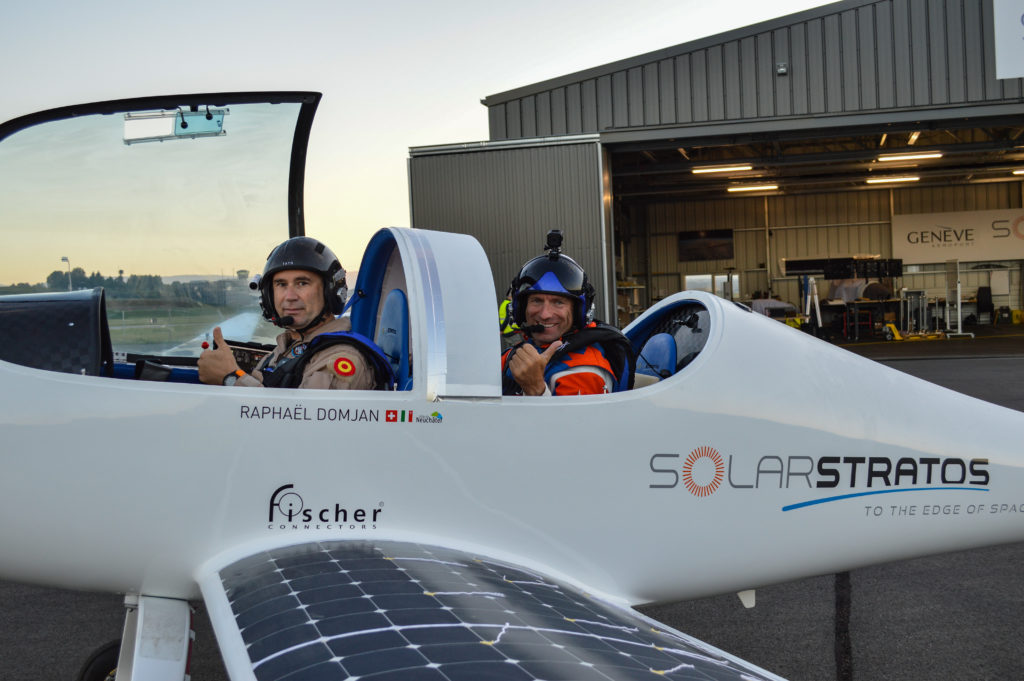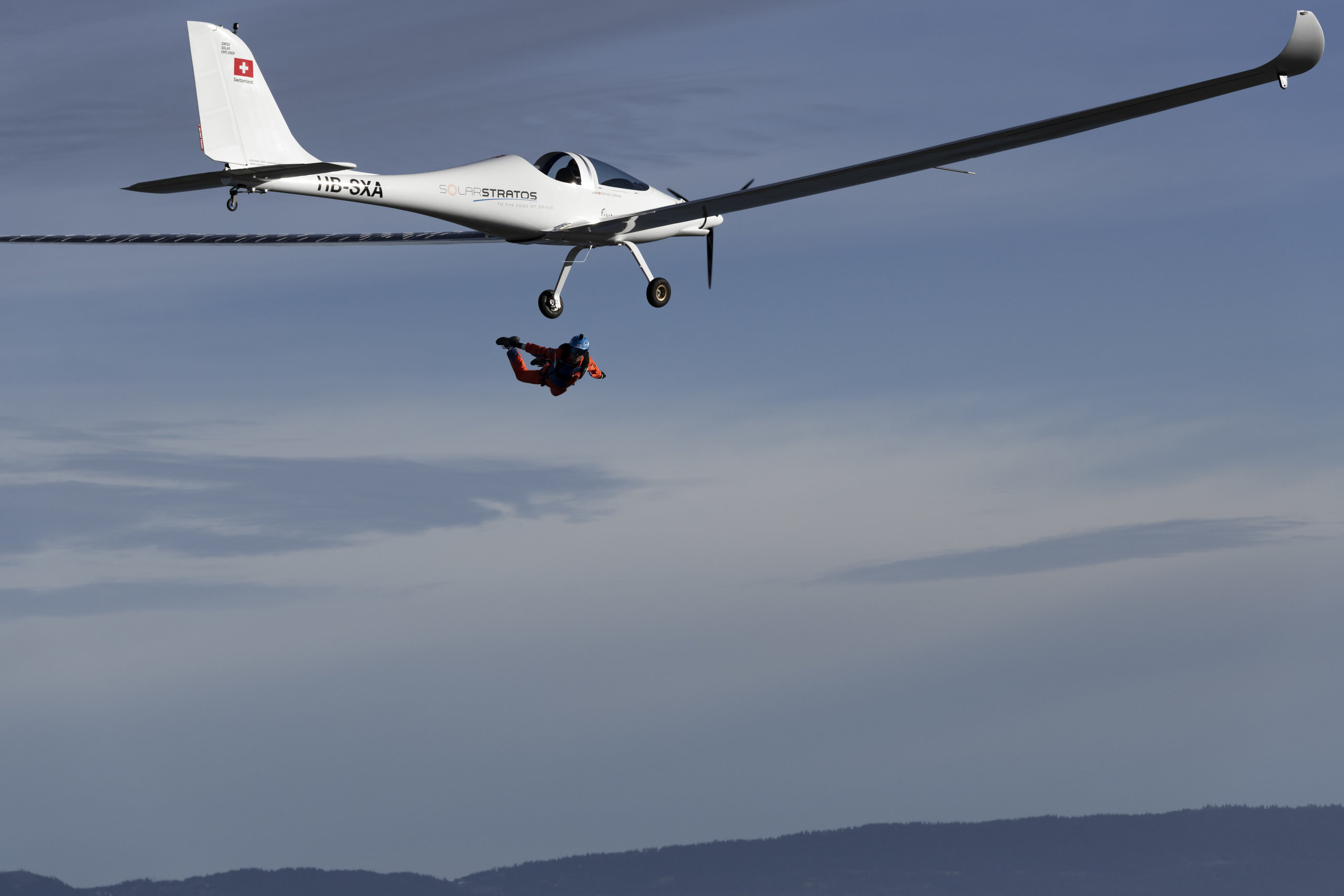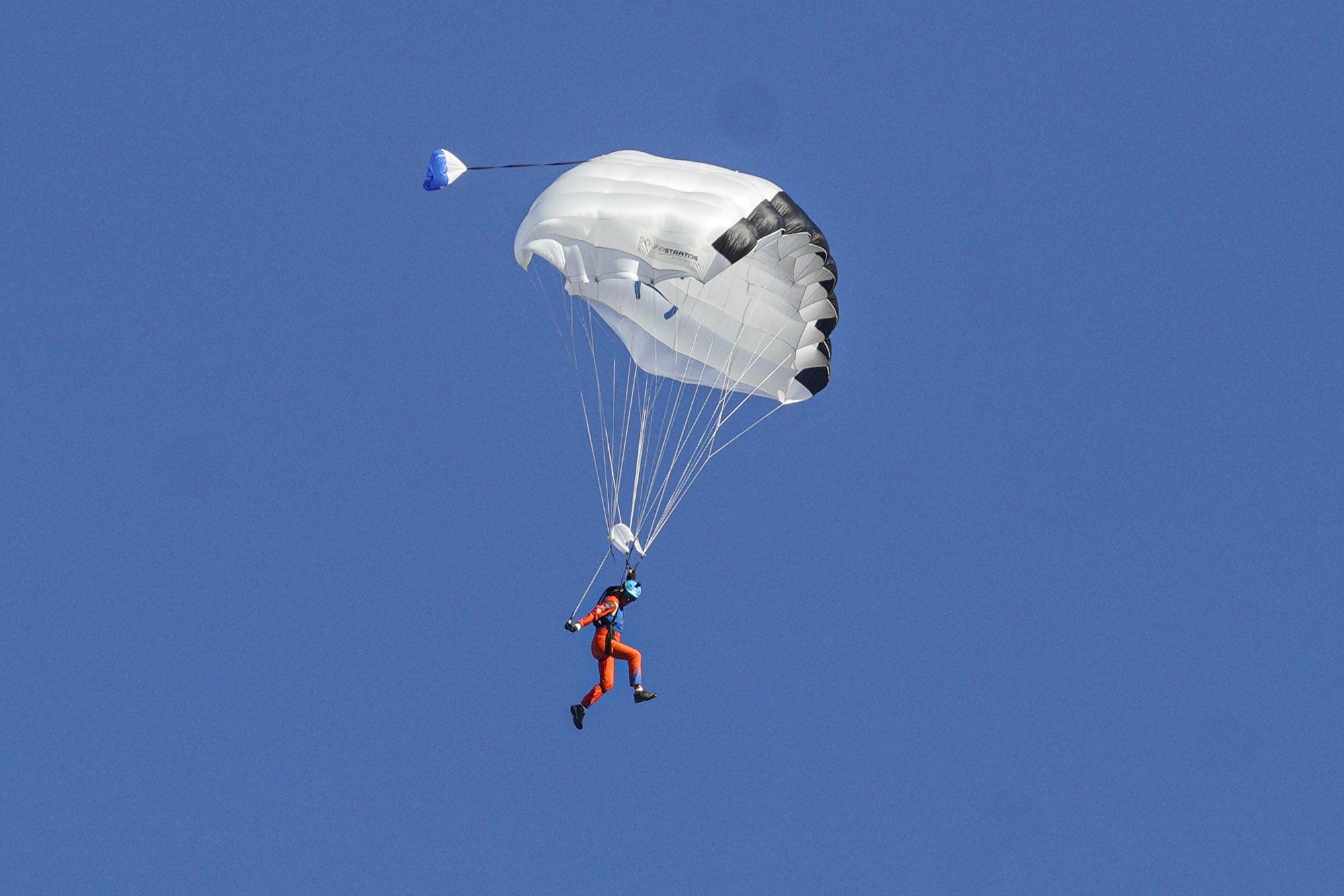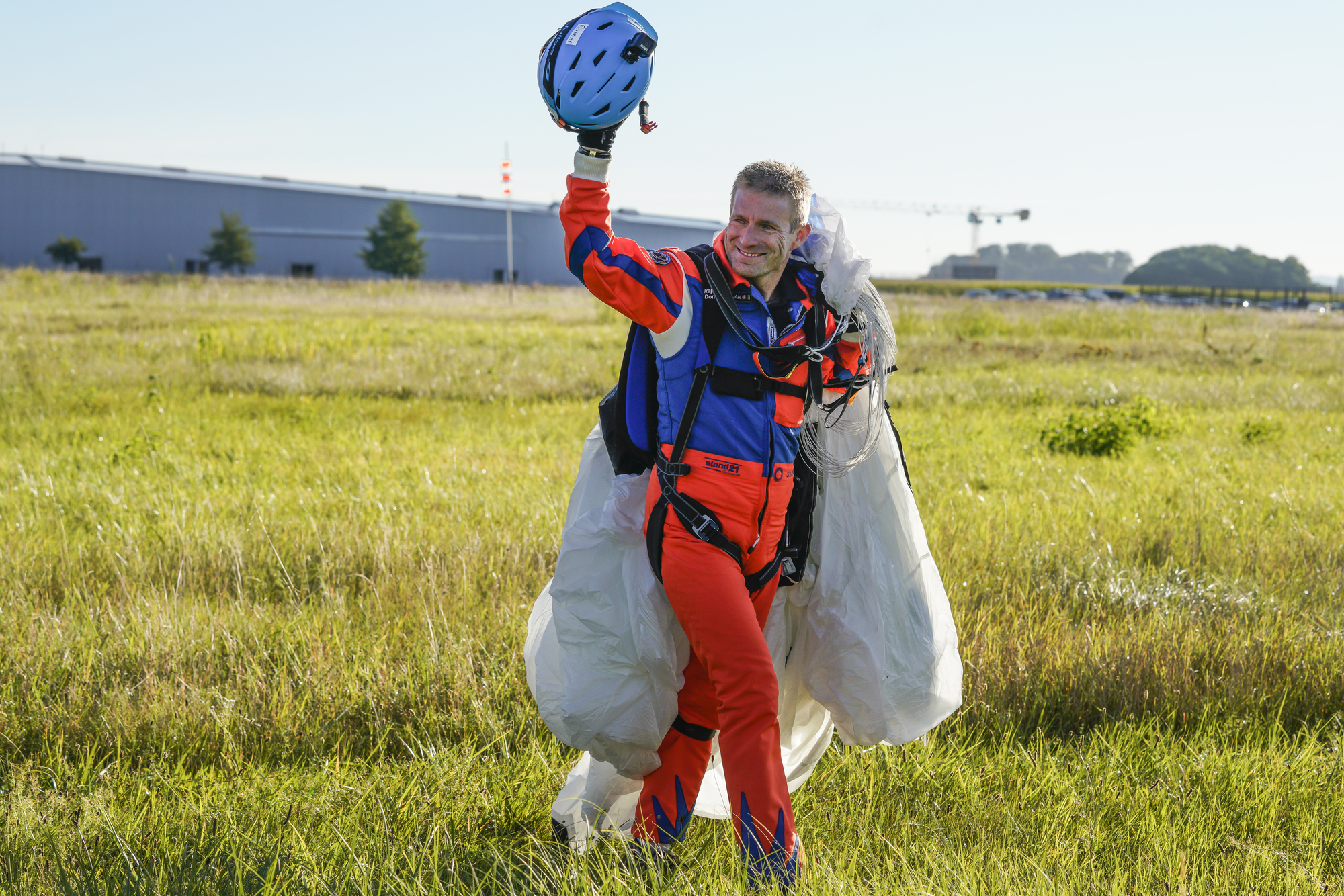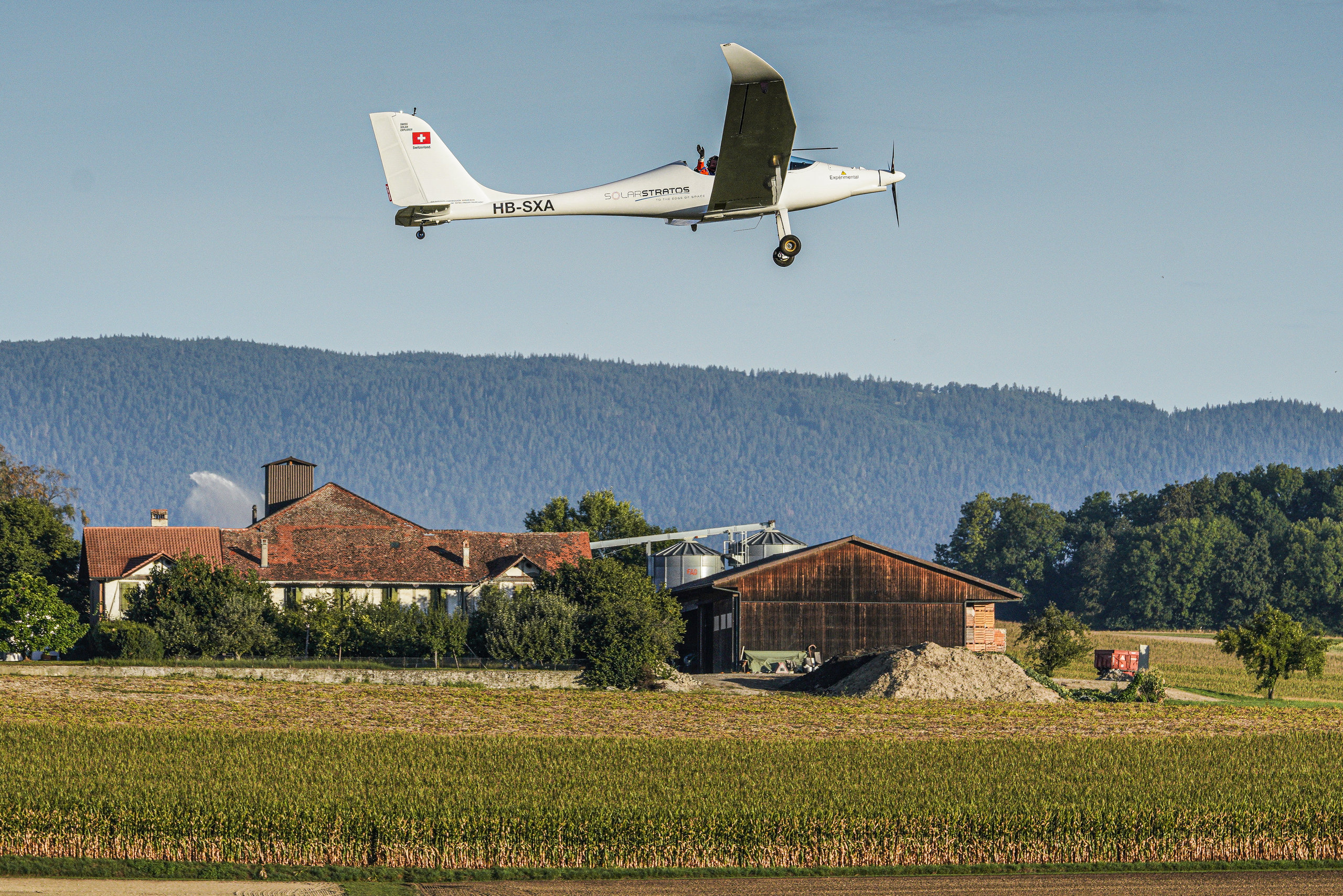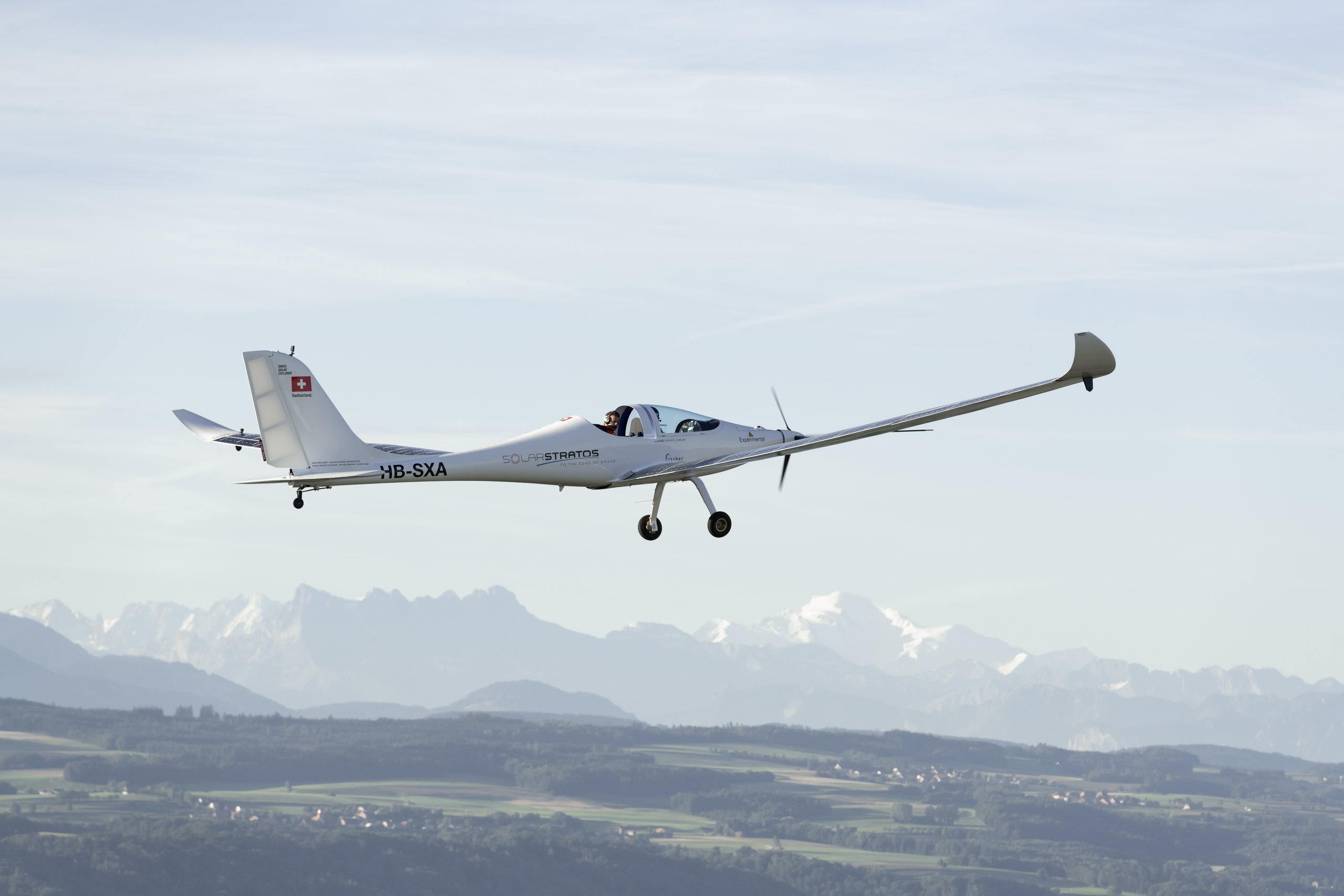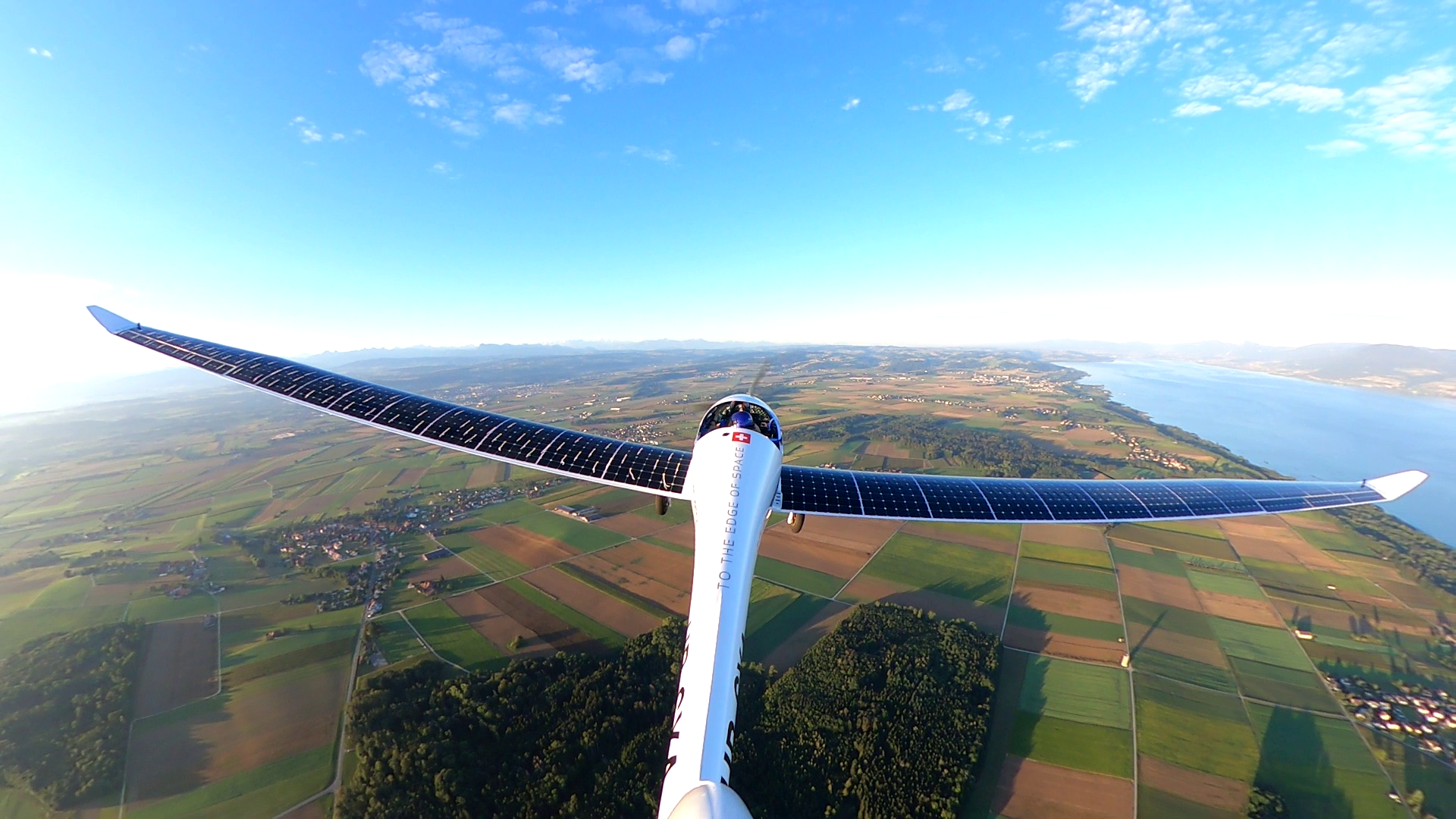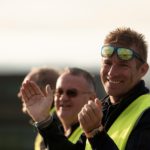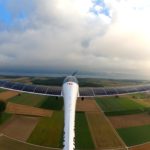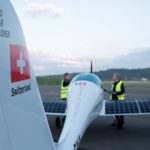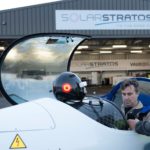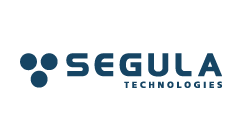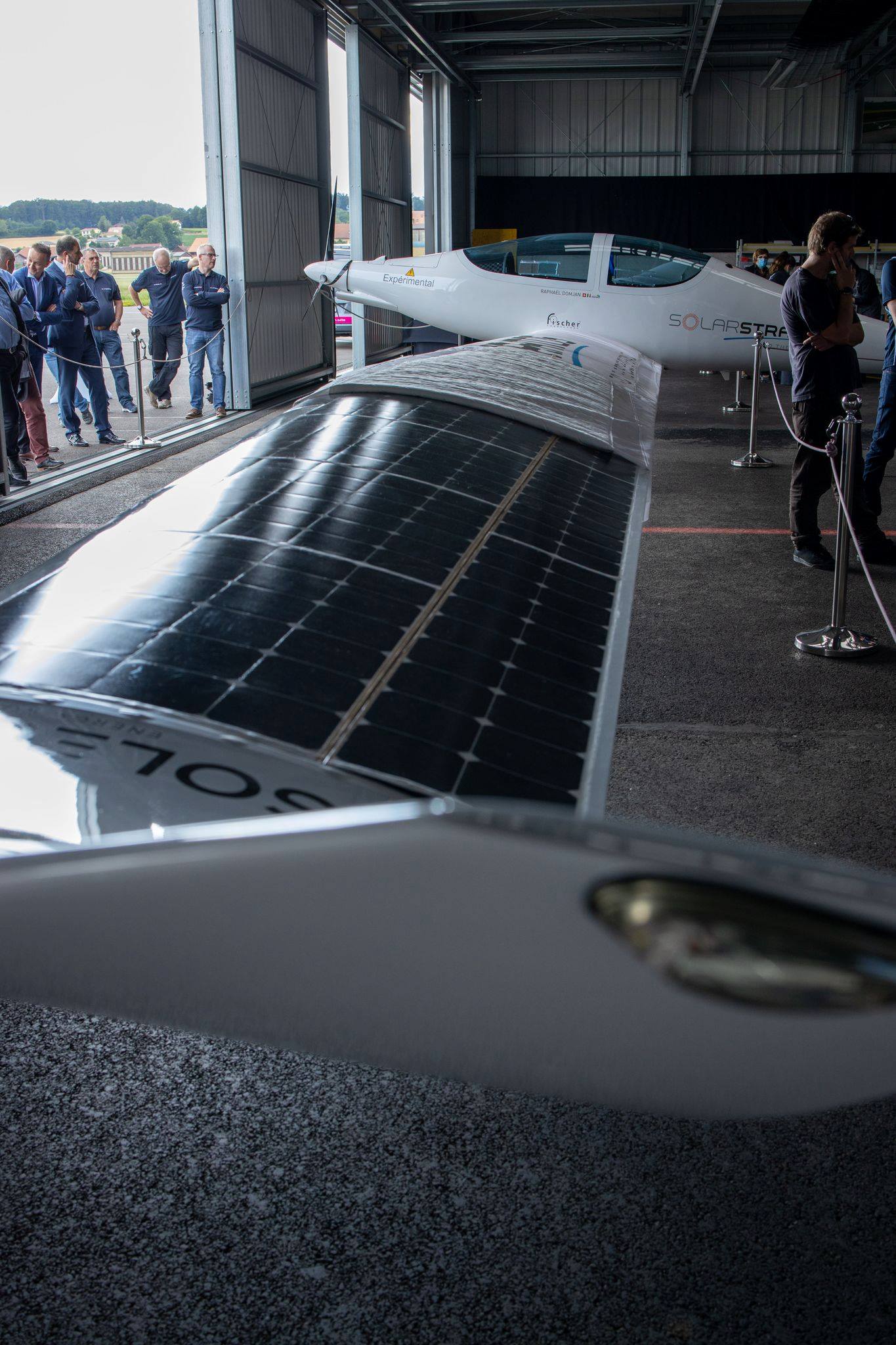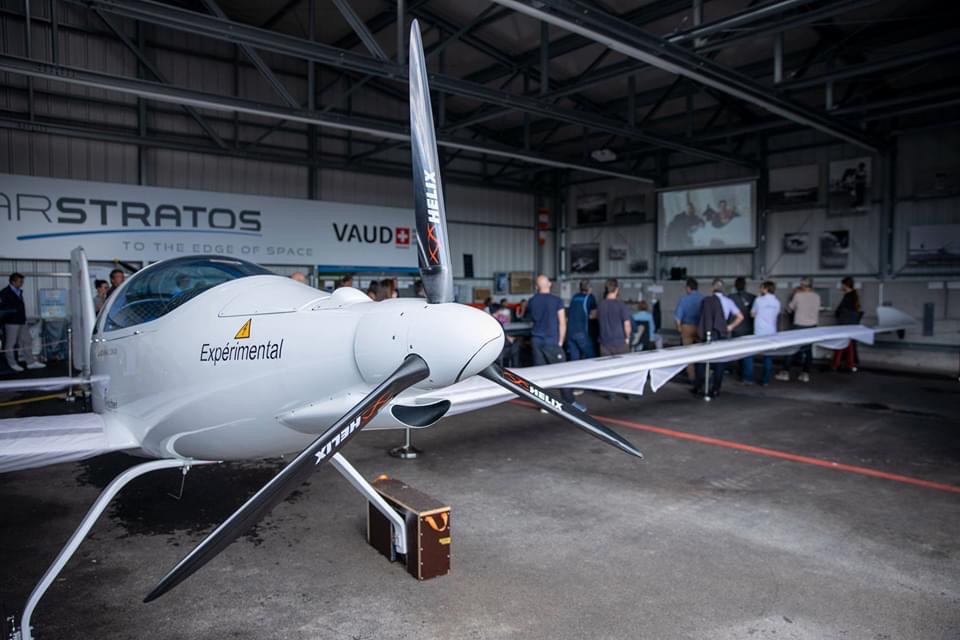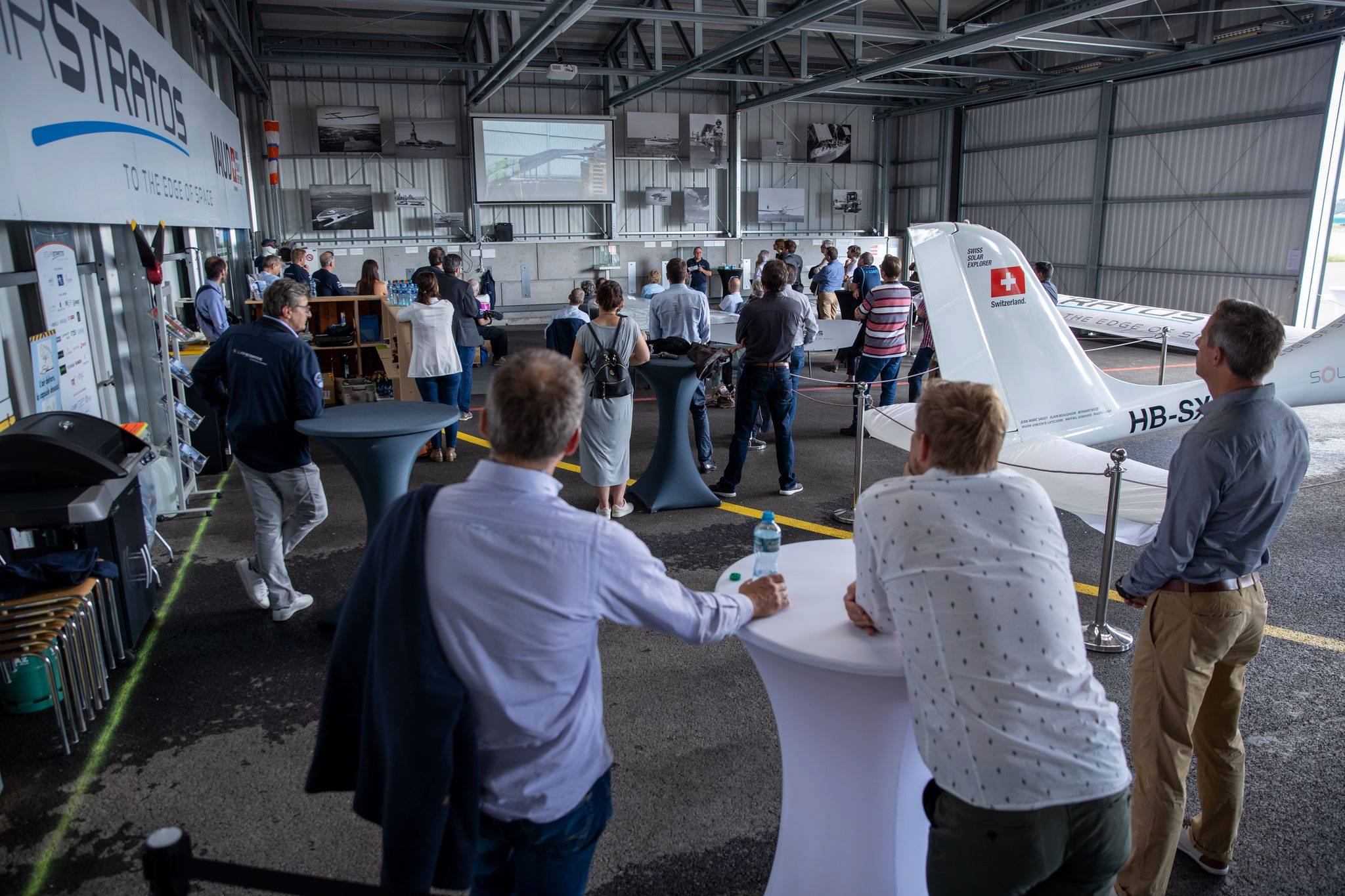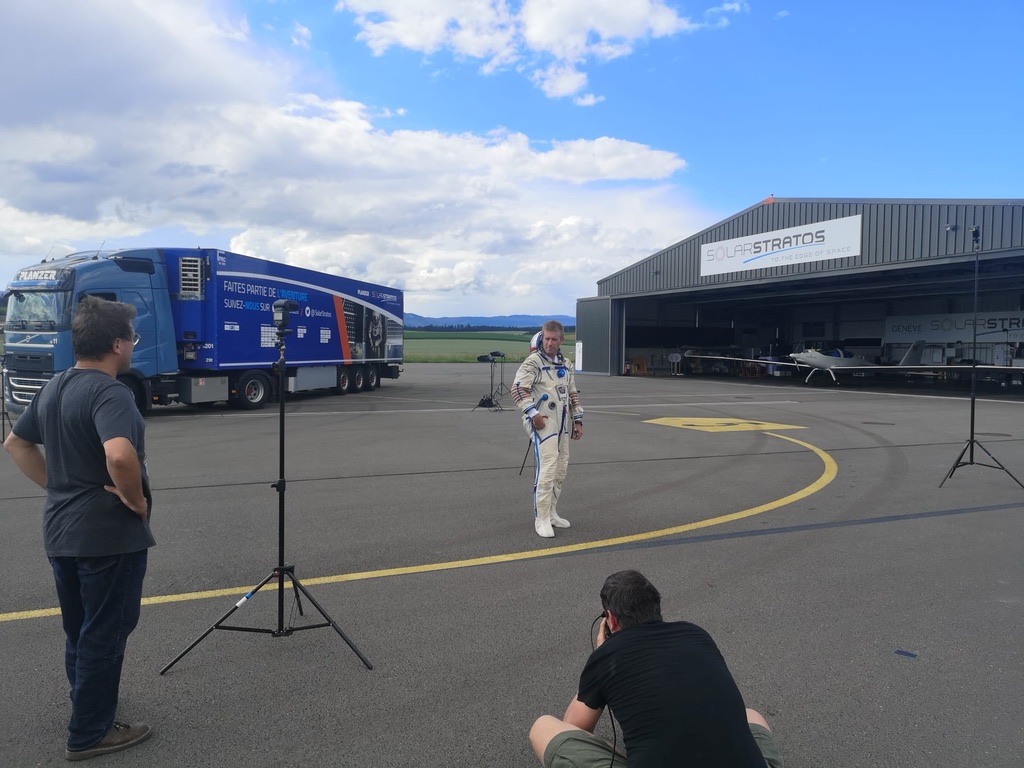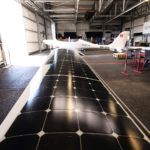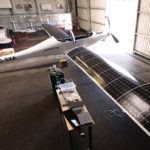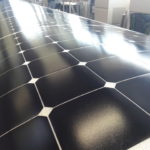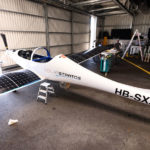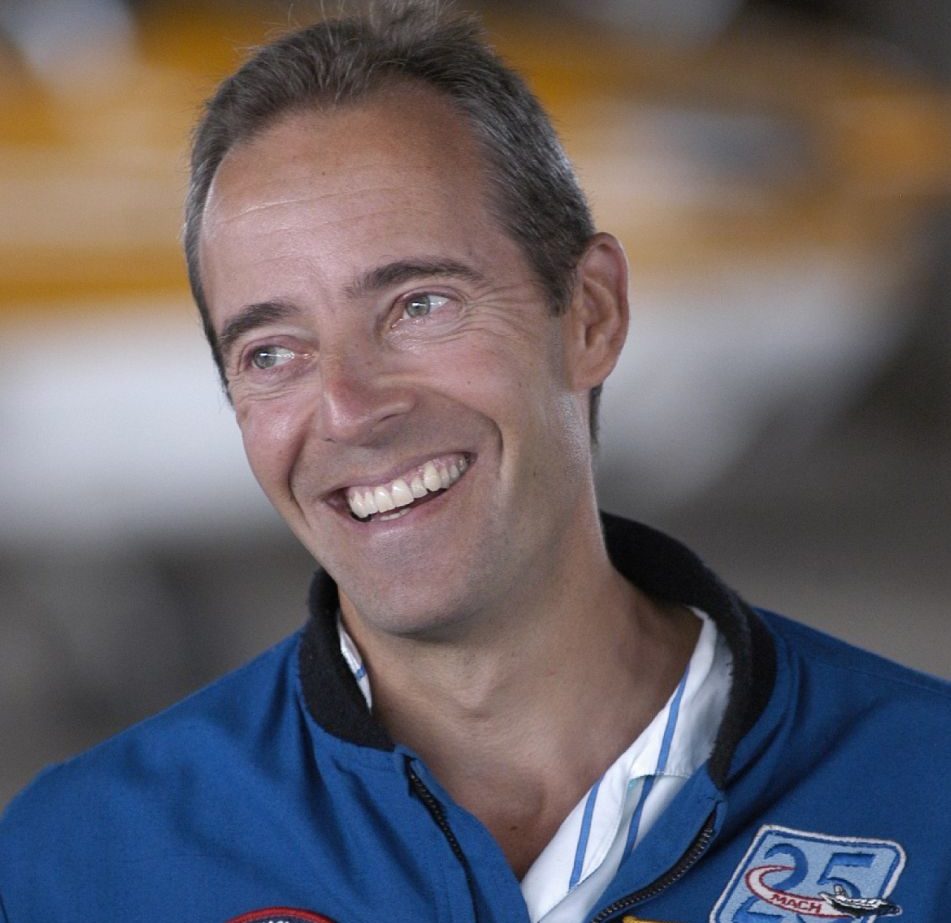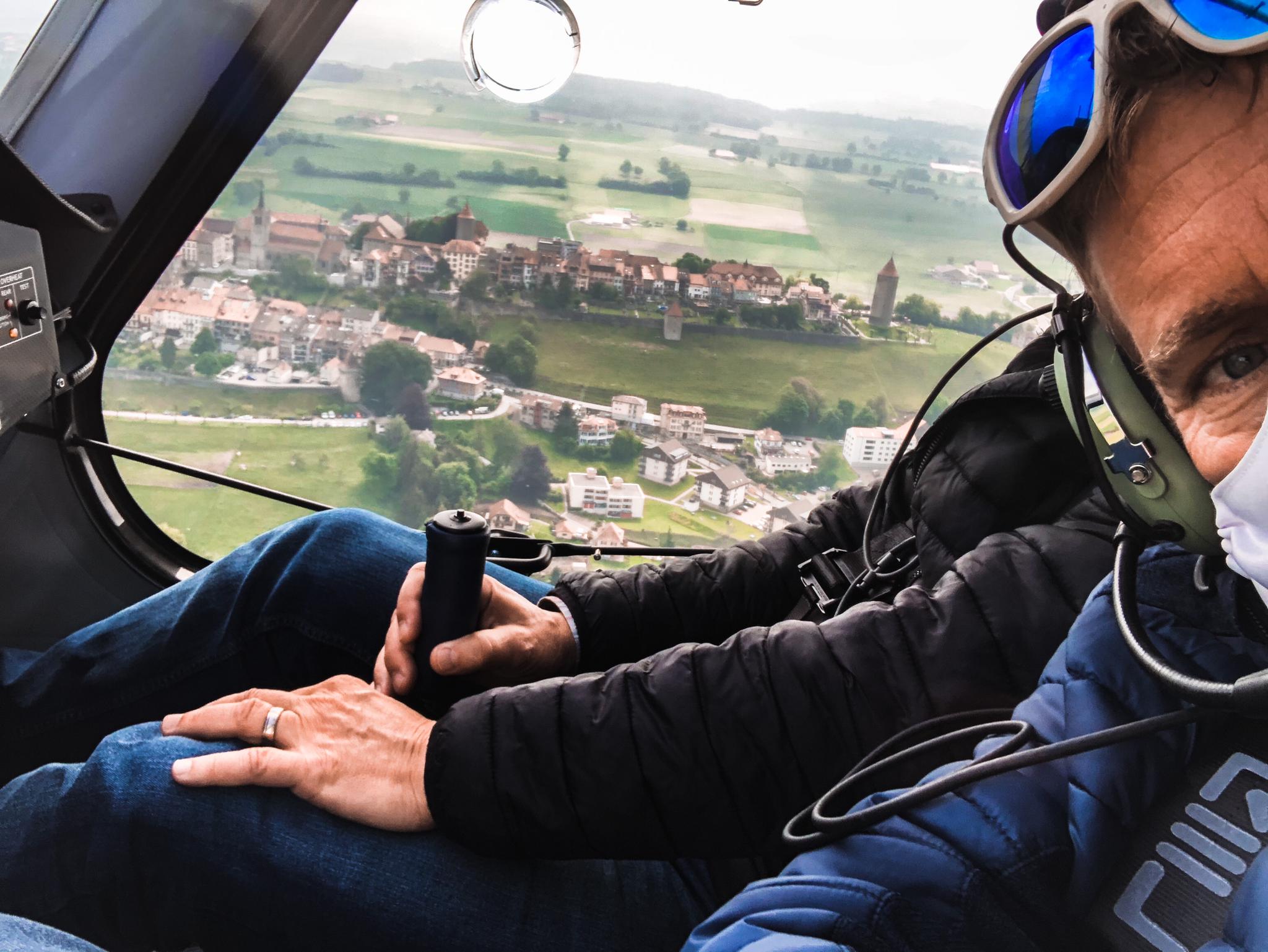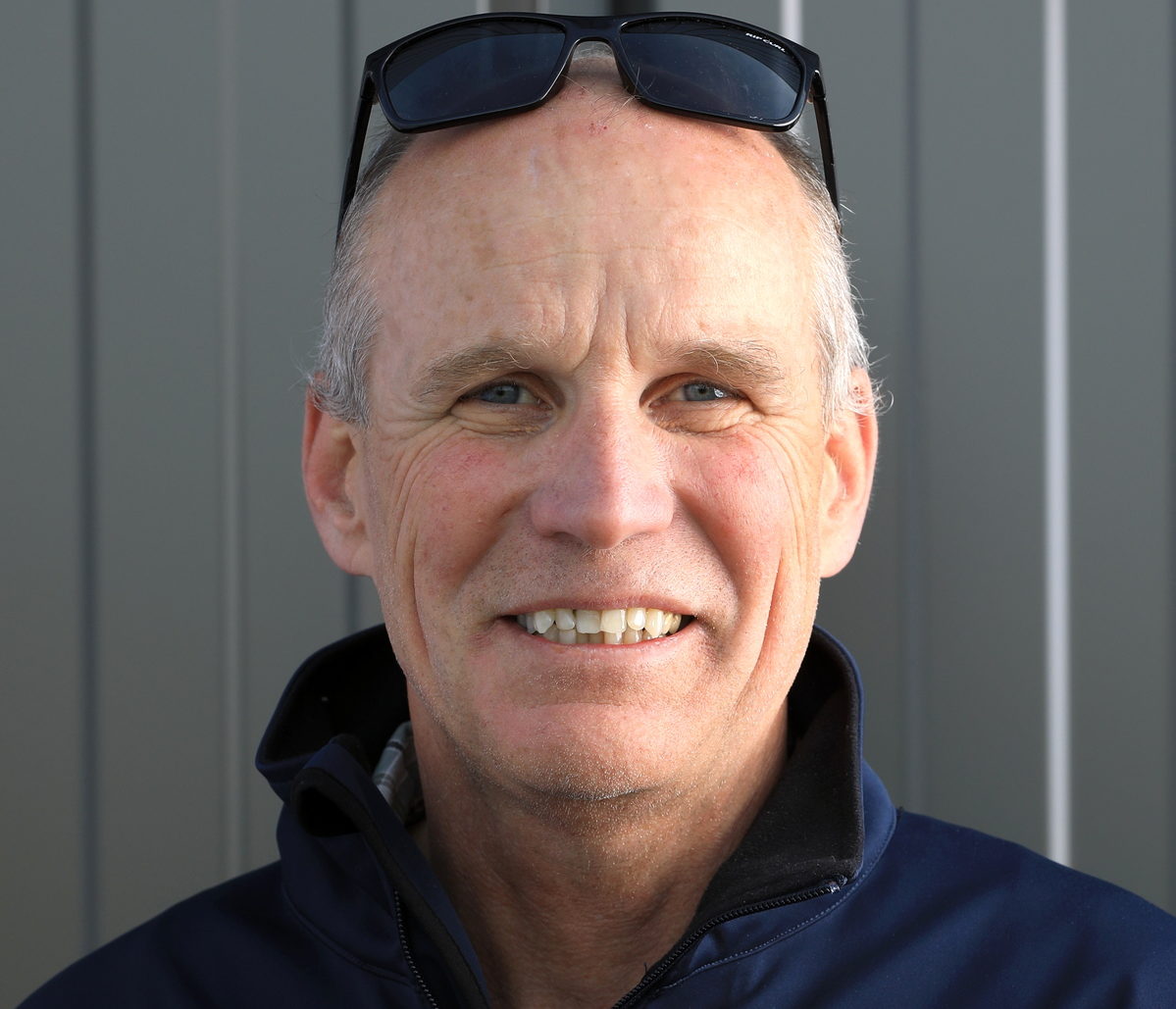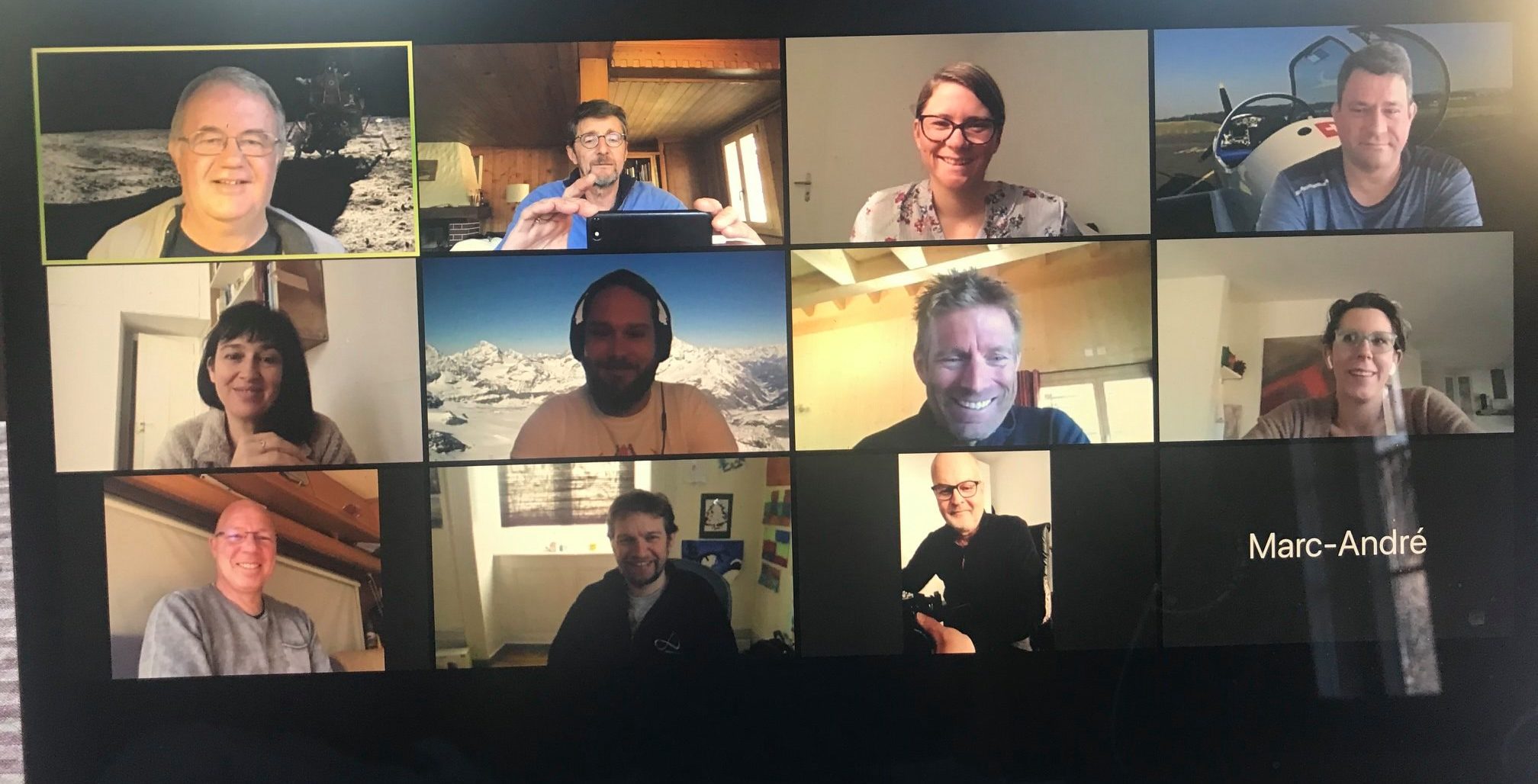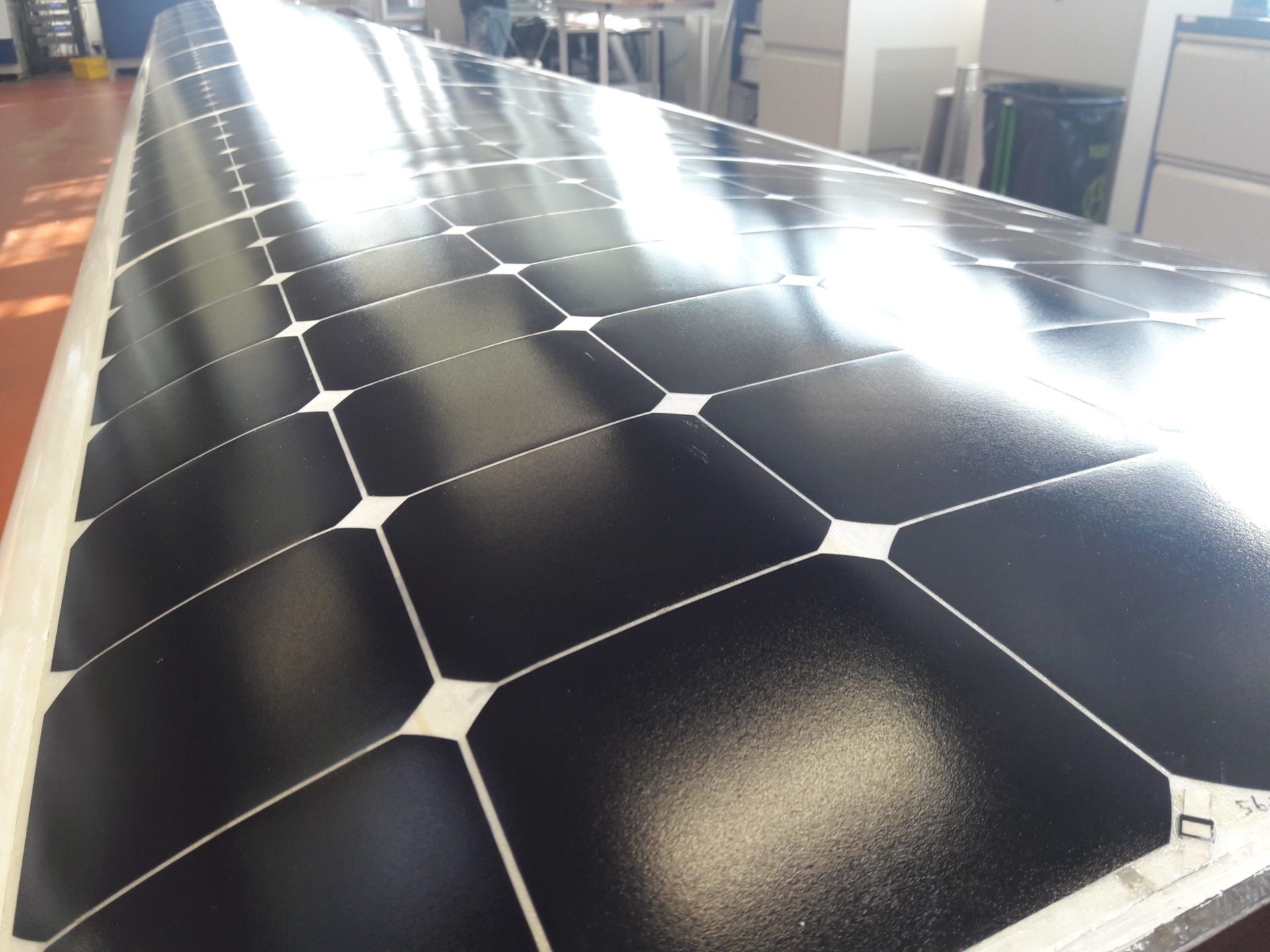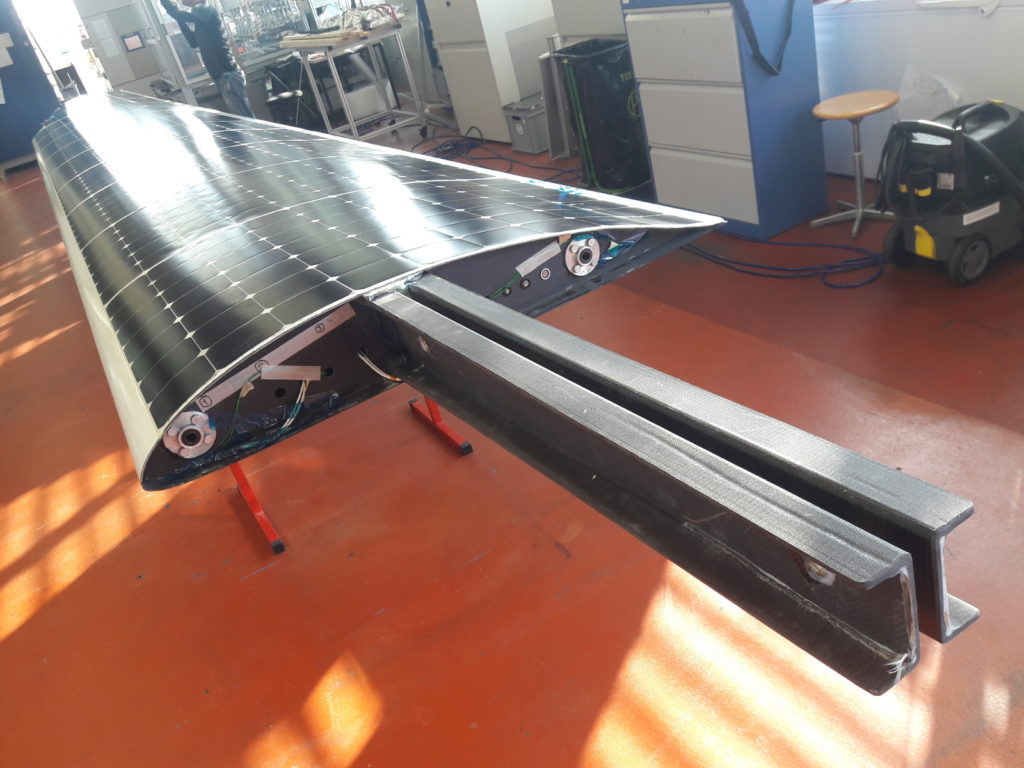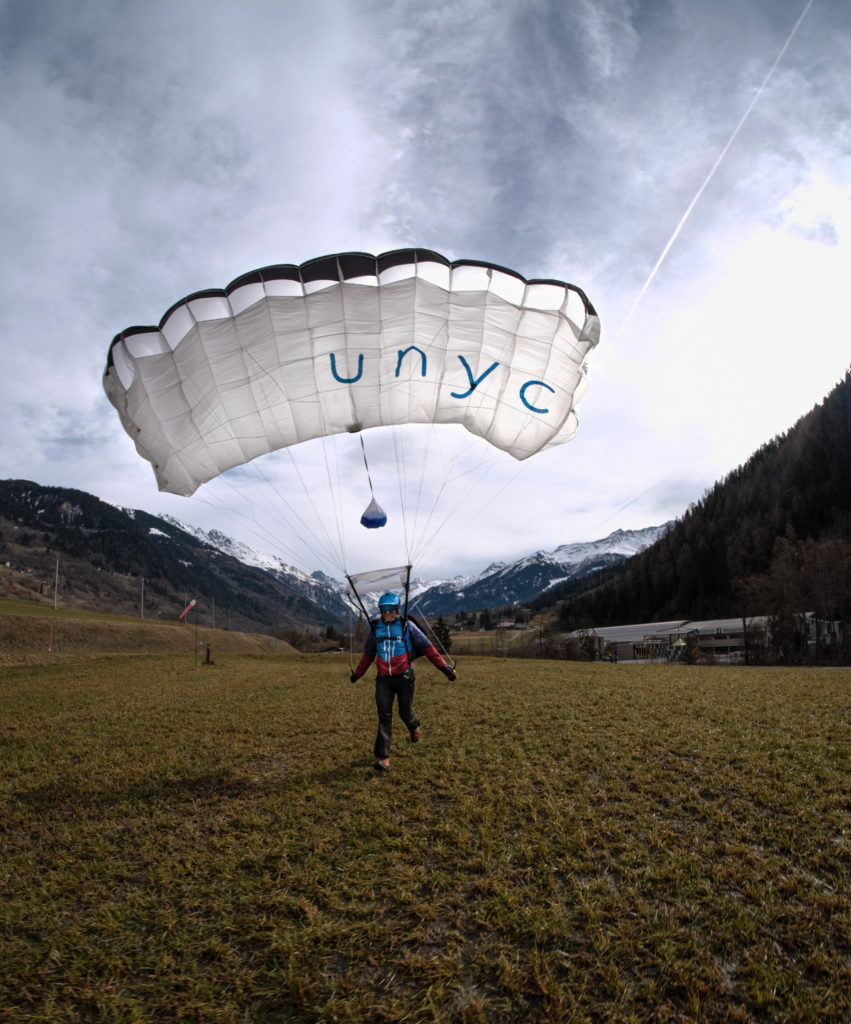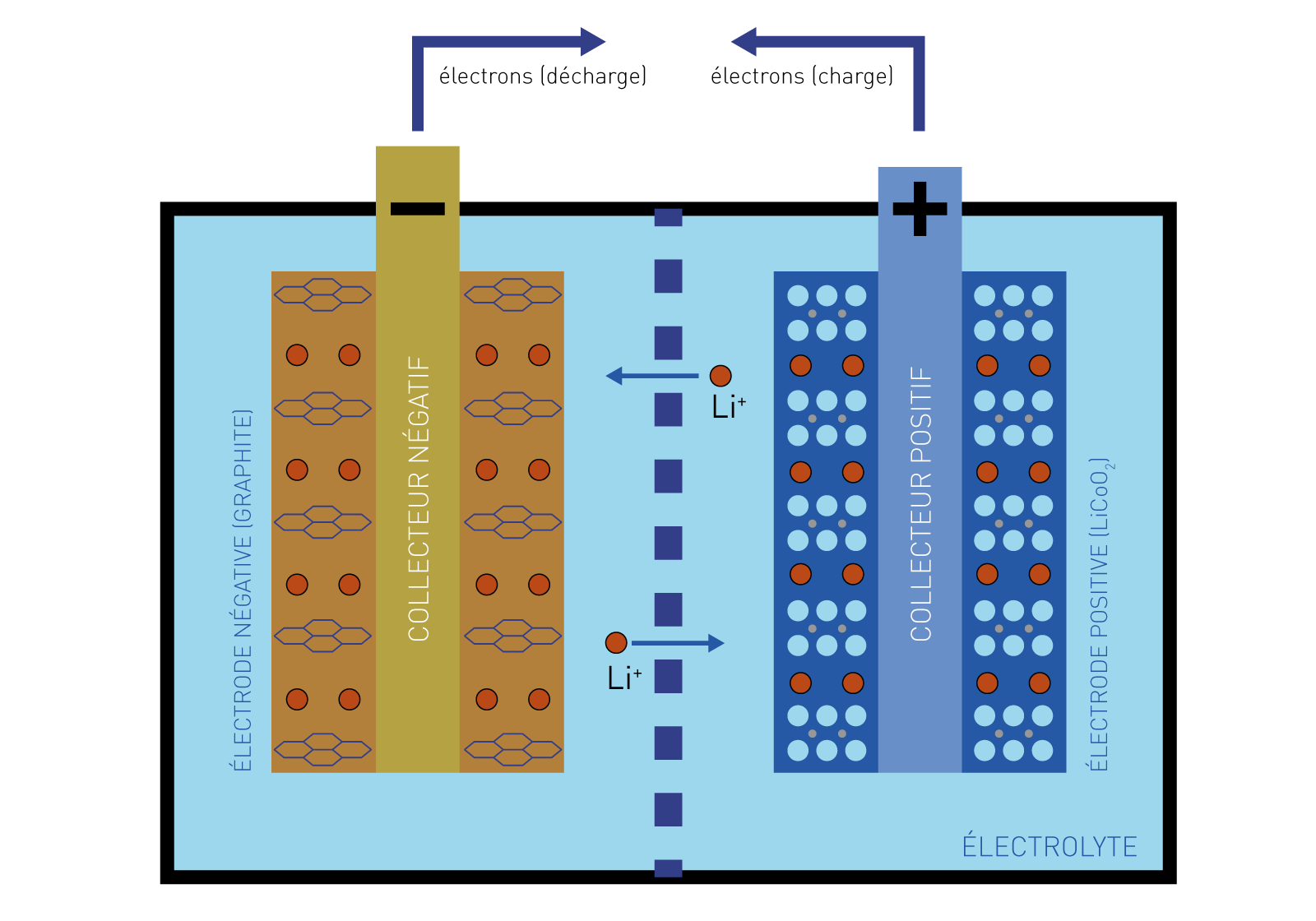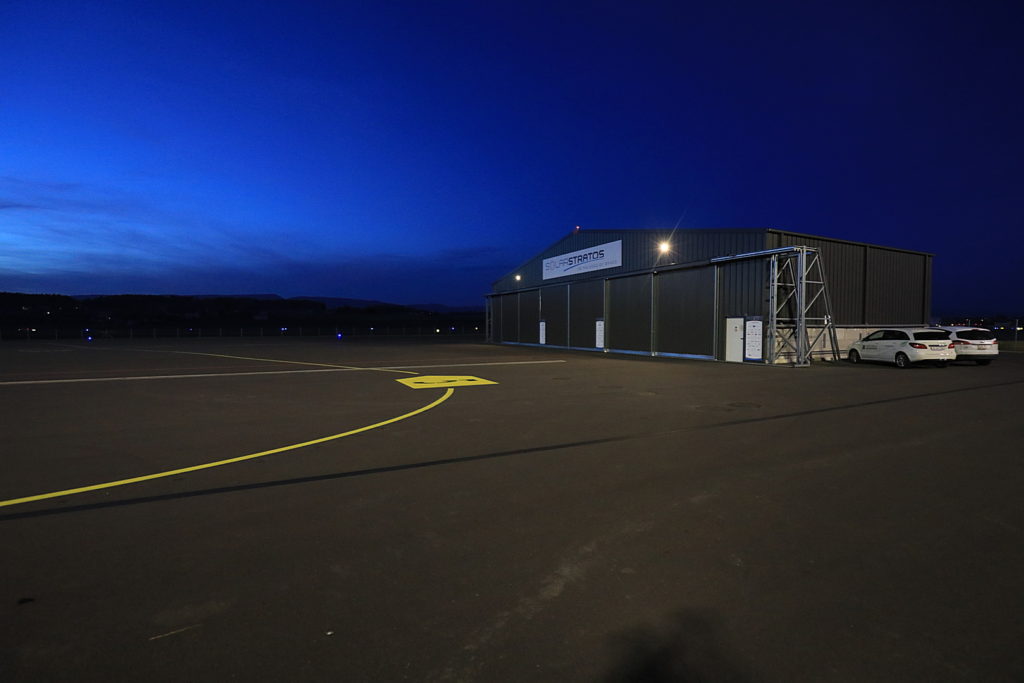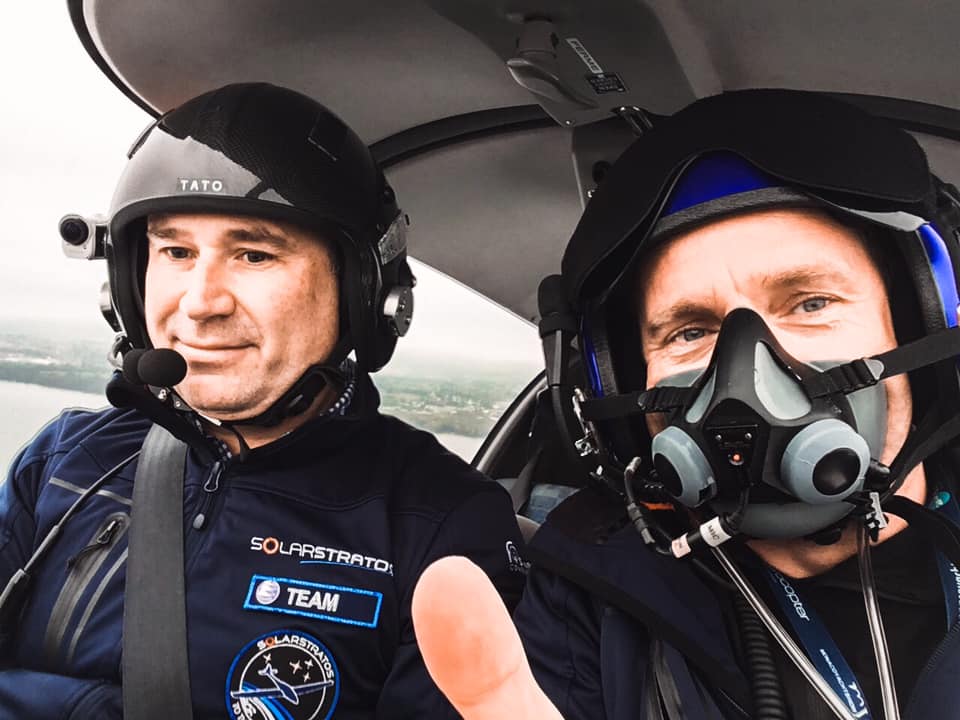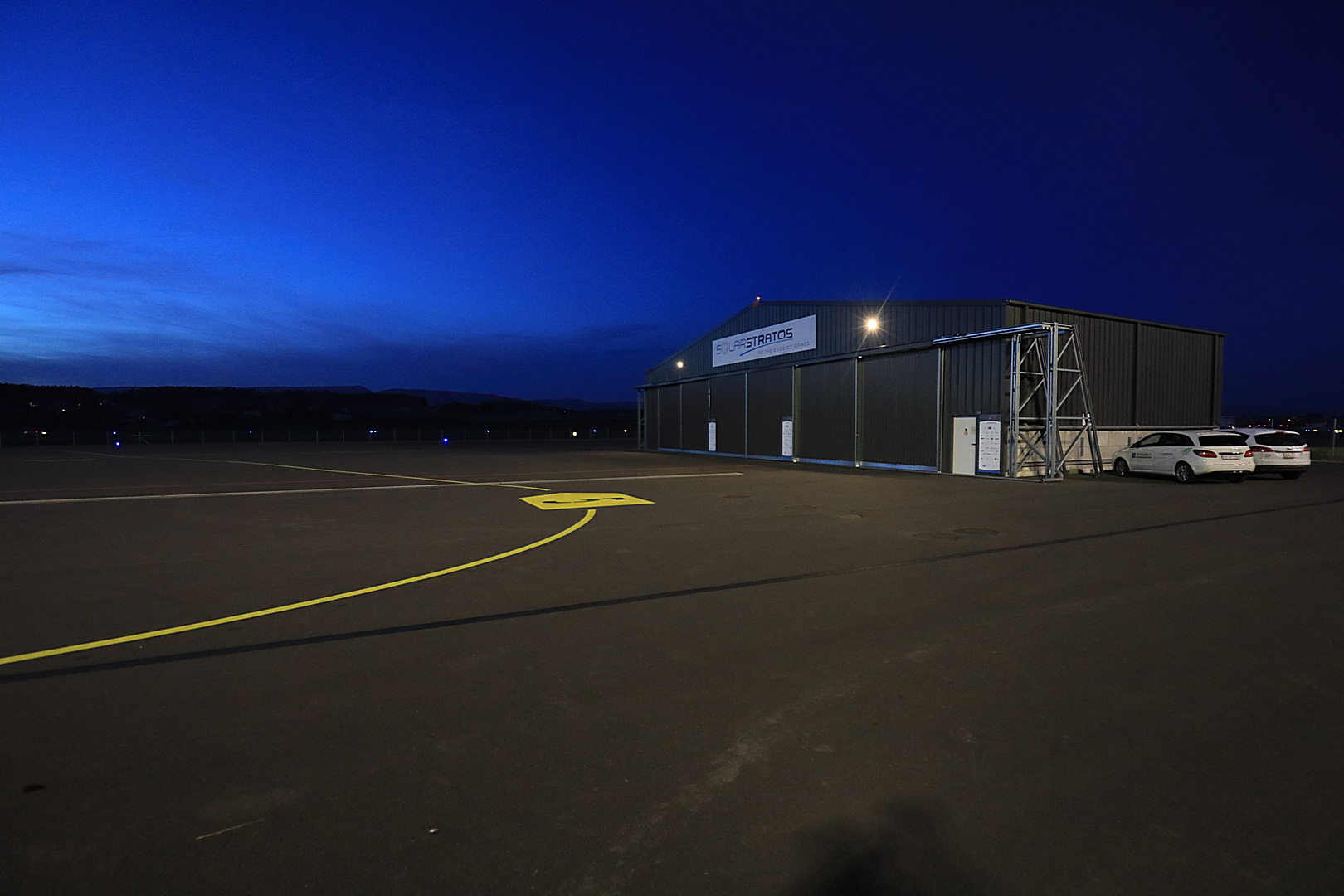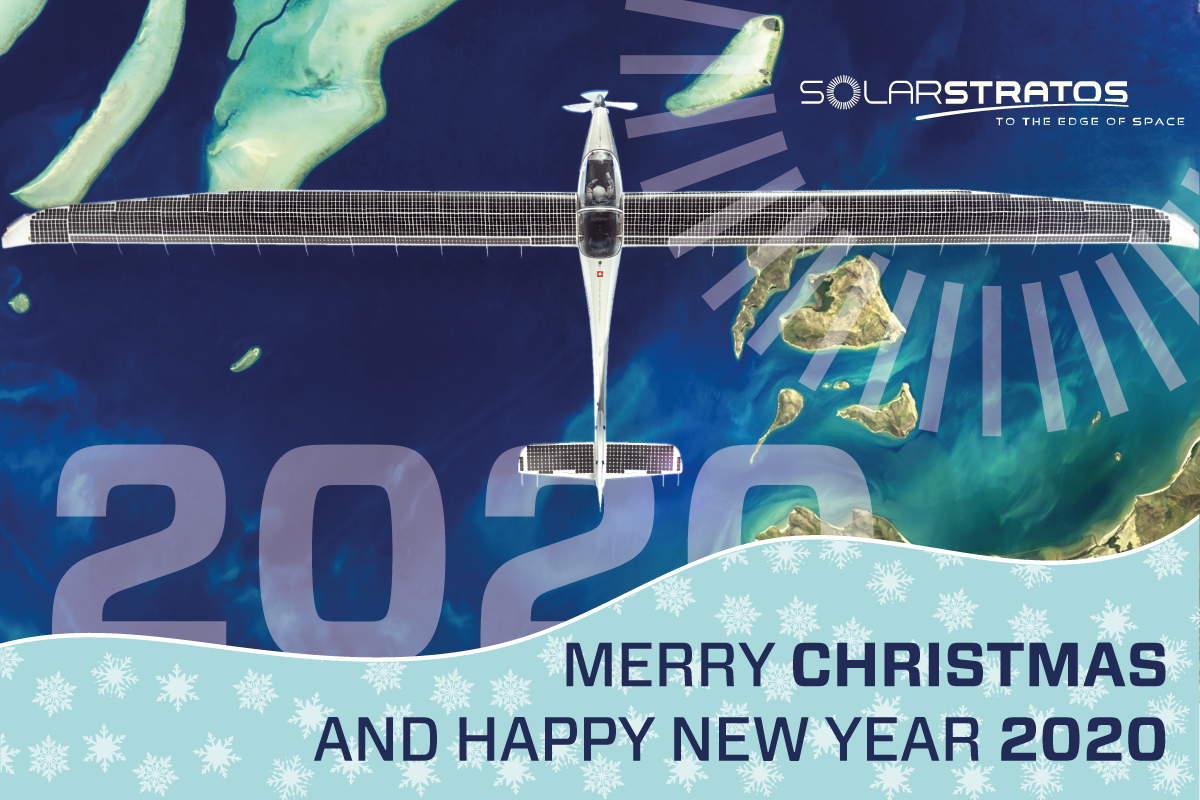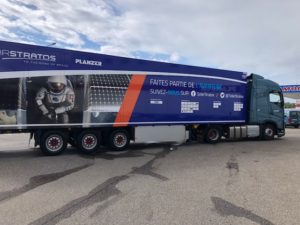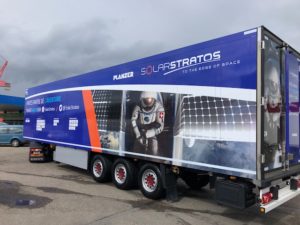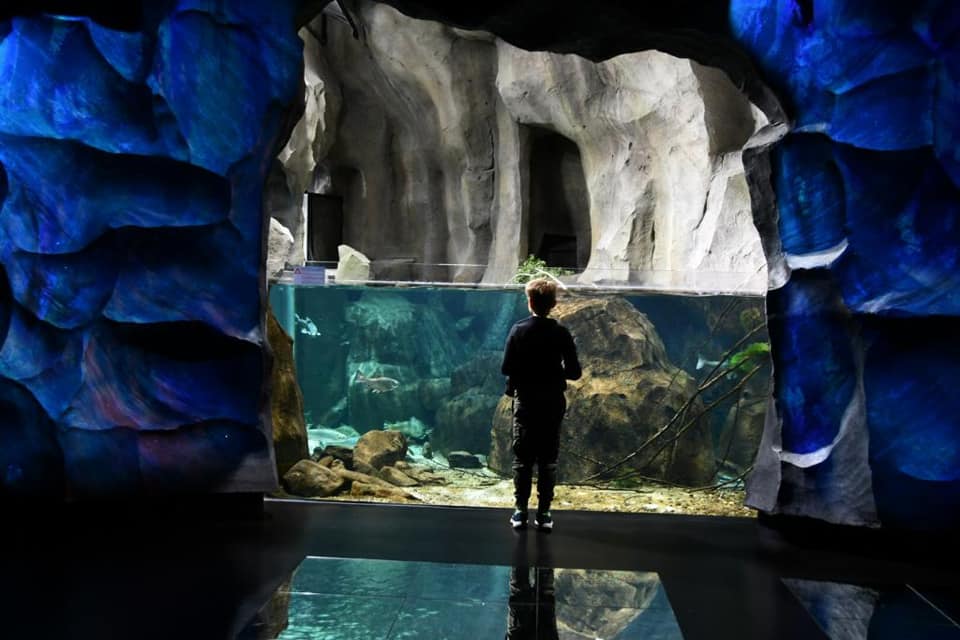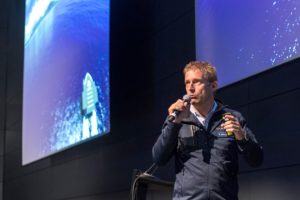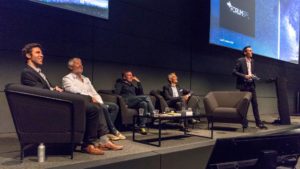First tandem flight onboard SolarStratos
This month we are celebrating two world premieres AND achieving our first tandem flight with Raphaël Domjan onboard with test pilot Miguel A. Iturmendi. The pair flew for 48 minutes with Raphaël sitting behind Miguel, watched closely by our partners, Club Members and the media!
This was a conclusive experience and decisive in the pursuit of scheduled test flights and upcoming world premieres.
World premieres: first jump from an electric aircraft and first solar free fall
SolarStratos has set its first world premieres! Watched by a large group of media and guests, Miguel A. Iturmendi flew Raphaël Domjan to an altitude of 5,000 feet (1,520 metres) from which the eco explorer performed the first parachute jump from an electric plane and the first solar free fall in history.
After just a few minutes suspended beneath the parachute, Raphaël landed at Payerne Aeropole followed 20 minutes later by the solar plane which then returned to the SolarStratos base.
This flight and these successes are of central importance in the history of the SolarStratos project. “The success of this first jump from an electric plane and this first solar free fall are the result of tremendous work by the whole team and our technical and scientific partners. This is an important step in the development of more environmentally friendly aviation”, said Raphaël Domjan after landing.
Thirty flights achieved
SolarStratos has notched up over 30 test flights, including almost 20 since flights resumed in July. The average flight time is around 30 minutes, while the longest was 51. The flights to date have been carried out by our test pilot accompanied by Raphaël Domjan at an average of 5,000 feet (1,500 metres).
Raphaël Domjan at the controls of the plane
After flying as a passenger, Raphaël Domjan took control of the plane and flew his first training flights under the test pilot’s instruction. Objective no. 1 is to take control of the plane and to become familiar with the cockpit.
First of the test flights
On 23 July, at dawn, SolarStratos took to the skies above Payerne once again for the first of many test flights – such great news for the whole team and its supporters! July was a busy month of preparations leading up to this moment: at the beginning of the month, test pilot Miguel A. Iturmendi, ran some low and medium speed tests on the tarmac at the base in Payerne. These tests were conclusive, so the technical team made various adjustments to prepare the aircraft for its first flight in 2020.
In parallel, the Federal Office of Civil Aviation issued the permit to fly and so, on Thursday 23 July, SolarStratos rolled out of the shed and took off for a low altitude flight lasting 20 minutes! Miguel A. Iturmendi, one of the team’s test pilots, was at the controls and relished the opportunity to familiarise himself with the solar prototype. On landing, he was very happy with the first experience: “I got some good feedback. SolarStratos feels like a big and very good glider. The aircraft’s climbing performance is good, better than I imagined. And you have to be vigilant when landing as the plane needs a long landing distance.”
This first flight and the upcoming test flights are designed to settle technical details in order to be able to gently increase the altitude and duration of the flights.
StratosTime
Here are the details of the maiden flight from the point of view of the technical team:
Thursday 23 July 2020: it is still dark at the Payerne airport. Raphaël Domjan, Roland Loos, test pilot Miguel A. Iturmendi and the entire technical team meet at the SolarStratos base.
0515: technical briefing and reminder of the planned flight manoeuvres
0530: radio and weather checks with the control tower and the chief flight officer
0540: review of synchronisation procedures, turn on measuring instruments (in particular the GPS) and sensors (flight recorder)
0545: pre-flight checks and inspection of the plane
0550: SolarStratos leaves the hangar
0600: engine system check
0630: radio check with the control tower, gate is opened
0645: taxi to runway for take off
0700: take off and first flight lasting 20 minutes
0720: soft landing and return to the base
This maiden flight was a moment of celebration for the technical team who were watching everything from the airport terrace and a happy moment for Raphaël who exclaimed: “We are back in the air! Thanks everyone! It’s awesome!”
Next came a debrief for the test pilot and the technical team, followed by a well-deserved coffee and croissant!
Welcome to our new partner
SEGULA Technologies is a French engineering group that leads projects in many different fields, including aeronautics. They are joining SolarStratos as partner and the team welcomes them onboard and thanks them for their support!
Thank you!
The fact that we are able to fly again is thanks to your unconditional support and we are delighted to be able to share these exceptional moments of our eco exploration with you. Thank you all for being at our side and for your continued support. We look forward to continuing this SolarStratos Mission together and are excited to be at the very beginning of a magnificent adventure.
We wish you a wonderful summer and look forward to seeing you again soon!
Raphaël Domjan and Roland Loos
The plane passes the inspection
Our solar aircraft is poised for take-off. With all the modifications at last complete, the technical team made an appointment with the Federal Office of Civil Aviation (FOCA) for the mandatory pre-flight inspection and the aircraft was declared in an ‘excellent state of readiness’. The flight safety aspects were approved.
Electrics and engine are tested
With the first flights fast approaching, the electrical system and engine tests are in full swing. Roland Loos, CEO, explains what this entails: “In order to carry out these tests, we have to simulate the reality as closely as possible. To achieve this, we securely attach the plane to a car, we turn on the electric motor and run it at full power for one minute – this allows us to simulate the take-off. Then, we slightly reduce the power in order to simulate the climb. This brings us up to cruising speed which we maintain for 15 minutes. Then it is time for the descent, and we decrease the power until the landing. These tests are of paramount importance, they allow us to test the engine, the batteries and the electronic system to make sure that everything works correctly. The goal is to ensure that the aircraft can fly without interruption to the system.”
The test pilots arrive in Payerne
Our two test pilots remained at home during the COVID-19 crisis, one in the United States, the other in Germany, but now with the lifting of measures, they have at last been able to join the team in Switzerland. Miguel A. Iturmendi and Norbert Lorenzen arrived at the Payerne base a few days ago and are busy finalising their pre-flight preparations alongside Raphaël Domjan, Roland Loos and the SolarStratos team.
Our loyal partners
“Our eco-exploration would not be possible without you! Thank you for being at our side and for supporting us!” Raphaël Domjan was effusive with his heartfelt thanks at the team’s traditional bi-annual evening in honour of the loyal partners of SolarStratos. The team welcomed the wider SolarStratos family to the Payerne base – in accordance with precautionary measures – for a happy evening which was well received after such a difficult period.
Stratospheric staging
The Payerne base was recently transformed into a movie set for a shoot produced by our photographer, Fred Merz, for our partner Planzer! Picture our eco-explorer decked out in his space suit driving a truck branded SolarStratos! Great stuff! Many thanks to Planzer for their support and the visibility they are giving us across Switzerland.
The wings are ready
We are counting the days until we can fly again! The solar cells have been fitted to the wings and the wings are at the base in Payerne and are currently being attached to the plane. It is a matter of time before we can at last prepare for take-off!
Jean-François Clervoy: “For the Swiss, the sun is their ocean!”
Jean-François Clervoy, French astronaut and godfather to the SolarStratos project, travelled to space three times with NASA between 1994 and 1999. He gives us his take on the stratospheric eco-exploration project led by Raphaël Domjan.
“I got to know Raphaël at a scientific conference in St. Tropez,” he recounts.
“Our rapport was immediate, and I was fascinated by his project from the start. You Swiss are incredible!
“Putting sailing around the world aside (wind is a form of solar energy), there are only three people in the world who have managed a circumnavigation powered exclusively by the most modern renewable energy systems. All three are Swiss and all three have used solar energy: Bertrand Piccard, André Borschberg and Raphaël. You have imagination, ideas and the will to execute them. It’s fantastic!
“The sun is the ocean for the Swiss. You have no sea, but you identify that we must utilise the sources of energy that nature makes available to us in unlimited supply, the sun being one of these, and then you develop the technology to harness this energy. That is what you are trying to do with SolarStratos…
“Space is a very special place. To reach it and to be able to spend time there, you first need a considerable amount of energy to launch the rocket and then over time you avoid any waste and you recycle everything.
“From an altitude of 20,000 metres, the sensory experience is very close to that of astronauts. The sky becomes very dark, even in broad daylight, and you can very clearly see the round shape of planet Earth, it is such a beautiful sight that we have been known to cry from the emotion.
“The stratosphere is an ‘in between’ where no one ever remains. It is too high for airplanes and too low for the spacecraft that pass through it at high speed. SolarStratos will remain there, in the ‘in between’, fuelled by the unlimited and above all completely clean energy of the sun. It is Icarus’ dream, but in this case the sun will be an ally and not an enemy!
“I truly admire the artisanal aspect of the SolarStratos project. I also believe it is the only way to carry out such a mission, provided that you respect the rules of the craft in question. A craftsman has the know-how and can work professionally without being hampered by excessive bureaucratic constraints. Besides, some of the more industrial but equally innovative projects, such as Apollo, are artisanal projects in disguise, although they can take 10 times longer, cost fortunes and require significant political support. The advantage of a small team is that when a problem arises, decision-making is quick and efficient. This approach makes it possible to achieve things that are unthinkable within the framework of a large industrial organisation.
“To conclude, I think SolarStratos is a beautiful project, led by a superb team, with noble objectives, in harmony with nature. I dream of someday sitting in the passenger seat of the plane, but this privilege must be earned, and everyone involved in the project deserves that honour first.”
An electric experience!
Raphaël Domjan continued his training for the stratospheric solar flight during the lockdown period, by taking a course in electric aviation with Olivier Dessibourg, a pilot and specialist in this field. It was a great opportunity to gather additional knowledge before taking up the controls of SolarStratos.
Precautions in place
The SolarStratos team has been back at work at the office and at the Payerne base since the 11 May, with the administrative staff working on rotation. The technical team is working on the aircraft in strict compliance with personal protection rules as per the precautionary measures decreed by the Federal Office of Public Health.
Interview with Philippe Pilloud, our flight operations and safety manager
flying hours on various types of aircraft (from ULMs to the Boeing B737 and Airbus A320) and is currently a Captain on an A320 for a major airline. He has also been involved in flight safety for the airline for more than 15 years. Philippe has a Masters in air transport, plus training as an accident investigator, a mechanical engineer and a safety engineer. We asked him about the security preparations for the SolarStratos flights.
SolarStratos: What sort of work are the pilots currently undertaking?
P. Pilloud: “We are impatiently waiting for flight operations to resume – the test pilots are eager to get started! All the recommended sanitary precautions have been implemented and flying with a single pilot will make things easier. We are taking advantage of this break to refine the final details and to review the flight programme over and over again so that nothing is left to chance.
SolarStratos: Is preparing a solar flight different from other flight preparations?
P. Pilloud: “We are counting on the solid experience of our test pilots and I am putting my operational experience at the service of this magnificent adventure in order to best prepare for these flights. Preparations always follow the same broad lines; you must know the characteristics of the aircraft, for example in terms of take-off and landing distance, you need to check the weather conditions, coordinate the use of airspace with other civil or military users, etc. There is plenty to do before you can fly. Also, in our case, the solar aspect of the flight adds other preparation parameters, such as the management of available solar energy.
SolarStratos: What are the security measures and are they more drastic than for a normal flight?
P. Pilloud: “Without getting into specifics, when we put a safety plan in place, we always keep the main objective in mind which is to bring the pilots back in good health and the plane back in one piece. I often say that take-offs are optional, but landings are mandatory. Everything is put in place for that to happen as smoothly as possible. SolarStratos is breaking new ground which in turn means we have to predict the potential difficulties that we will face as much as we can. There is no such thing as zero risk, so it is more about being aware of the risks involved, then controlling and managing them. The SolarStratos adventure requires multidimensional risk management that you can’t compare to normal flights.
Remote meetings
The COVID-19 situation has in no way detracted from the SolarStratos team’s drive and determination to move forward. Work sessions and meetings have shifted to Zoom and planning towards the first flights has continued apace. Raphaël Domjan’s mantra that ‘there is an opportunity in every challenge’ has really resonated during this period as the health crisis has allowed remote connections to be put to the test, something that will prove useful going forward.
And the plane?
The aircraft is currently in Wohlen for the final adjustments to the winglets (fins located at the end of the wings) and to attach the wings to the fuselage. One of the wings is completely finished, with solar modules installed.
The Swiss Centre for Electronics and Microtechnology (CSEM) has resumed part of its operation which is very lucky for us as we were able to give them our second wing to install the photovoltaic cells.
The fuselage is in the preparation phase and will be finalised at our base in Payerne soon.
Flights
The current global health crisis will unavoidably impact the schedule that was drawn up at the start of the year, in particular the start date for flying, so our two test pilots are in the process of developing a new flight plan, which (it almost goes without saying!) we hope will take place soon!
To our loyal partners
We would like to convey a message of gratitude and support to all our loyal partners and donors, who, like everyone else, must follow these precautionary measures to safeguard public health. The situation is tough and some of you have seen your operations greatly reduced or even suspended, our thoughts are with you and we wish you the very best for the future and thank you for your immense loyalty to our cause.
Special thanks
On April 16, a biogas vehicle provided by the Leuba Group transported the second SolarStratos wing from the workshop in Wohlen to the Swiss Centre for Electronics and Microtechnology (CSEM) to have the Sunpower solar cells attached.
The CSEM, our scientific partner, has been doing an enormous amount of work towards installing the latest generation of photovoltaic cells onto the wings of our solar powered aircraft. Thanks to their technical, scientific and innovative skills, we will be able to achieve unprecedented levels of technology that should allow us to reach the stratosphere in ideal conditions.
Our thanks to Christophe Ballif and the CSEM team for accompanying us and believing in our project. CSEM and the Leuba Group are two fine examples, among many others, of local companies that are fundamentally involved in the success of our project and who are constantly striving for solutions. Many thanks to them!
Our thoughts are with you all!
It is in a specific context that we are sending you this month’s newsletter as Switzerland, Europe and much of the world are living in slow motion, under the heavy weight of a virulent virus.
At SolarStratos, we are experiencing these difficult times like everyone else, in confinement and closely adhering to the instructions of the political authorities.
We are thinking of you all – dear friends, partners and supporters – and wish you good health above all. We will all need to stay positive in the face of this crisis.
The following newsletter is in no way intended to divert our thoughts from those that are suffering or who are sick, but rather, to take a little distance for a moment. Our solar plane and stratospheric flight plans may seem anecdotal these days but remember that our objective – beyond the technical achievement – is to accomplish today what seemed impossible yesterday. To dream of a better world.
A paradigm shift and awareness are imperative, and the current situation is a dramatic reminder of this. Our project sits, humbly, in this context.
Aircraft assembly
The new SolarStratos wings are being finalised at CSEM – the first one is complete, while work on the second one was temporarily interrupted for obvious reasons. Final assembly is underway with our partner in Wohlen and the rest of the process, which should lead us to the first flight of the year, will be dictated by the current situation. The byword over the coming months will be ‘patience’.
First flight objectives
Our test pilots, Damian Hischier and Miguel Iturmendi are ready to get back to work as soon as possible. Their average workday is quite different to most, it consists of flying all kinds of aircraft that have never taken off before, or as in the case of SolarStratos, that have undergone substantial modification.
The objective of the full-scale SolarStratos test flights will be to check the aircraft’s stability, firstly maximising its performance with a single pilot and then with the equivalent weight of a second pilot on the back seat, and finally, with a second pilot.
For the moment, Damian Hischier and Miguel Iturmendi are working on the test flight programme with our flight operations manager, Philippe Pilloud. It will then be a matter of gradually expanding the flight scope, before climbing higher and higher. From there, ‘the sky is the limit’!
Good news from Payerne aerodrome
The opening hours of the Payerne aerodrome have changed, closing time has been adjusted from 1800 to 2200. This is great news for us as it means that, weather-permitting, we will be able to fly more frequently and for longer periods, thus accelerating the pace of improvements and updates on our experimental prototype HB-SXA.
Pilot training
Raphaël Domjan, the man behind the SolarStratos project and future pilot of the aircraft, is as focussed as ever on his preparations. In addition to the physical training, and as far as he can, he is also working on his mind and technique. Last month, before this global crisis hit, he spent some time dedicated to parachute jumps and testing his rescue parachute.
We hope that you will enjoy the impressive and very beautiful photos from these sessions.
Powerful batteries
Our SolarStratos aircraft will soon be heading for the stratosphere and while the record-breaking flight is the culmination of many human and technological factors, to reach such heights, the plane will also need to be equipped with a 3-blade propeller, an electric motor and 20 kWh lithium-ion batteries.
These batteries have their advantages and disadvantages. The battery is essentially an electrochemical cell that uses lithium in an ionic form. This means that the battery releases lithium ions between two electrodes (a graphite anode and a metal oxide cathode) by reversible exchange, immersed in a liquid electrolyte.
When the project began, the use of lithium-ion batteries had been stopped, but this solution offers several advantages compared to traditional lead batteries. They have high mass energy (i.e. energy per unit of mass), high energy density (energy by unit of volume), low weight and reduced volume. Plus, this type of battery is unaffected by memory effect and its self-discharge is reduced.
With the pros, there do come a certain number of cons: these batteries are at risk of leakage and overheating, and they are fragile. They can’t withstand overloading or violent shocks; they can ignite or explode. These risks are obviously taken very seriously and are being closely studied by the SolarStratos experts and specialists in order to minimise them.
These batteries are nonetheless the best solution for conquering the stratosphere.
Embedding the cells
The SolarStratos photovoltaic cells are currently being embedded into the wings of the aircraft by our scientific partner, the Swiss Centre for Electronics and Microtechnology. This encapsulation process consists of grouping the cells together while ensuring their electrical isolation. Being embedded will make the cells more resistant to external factors such as humidity, rain, snow or even corrosion and mechanical shock.
Test flights are approaching
Our 2020 schedule is currently on track. Preparations are going as planned and the team is on target for the first 2020 test flights to take place in springtime out of Payerne aerodrome. The wings of the solar aircraft are being assembled and SolarStratos will be ready to take off in a matter of a few weeks.
SolarStratos and the Swiss Aéropole in Payerne
Don’t miss seeing Raphaël Domjan on the ‘Couleurs locales’ programme of TV channel RTS, dedicated to the development of the Swiss Aéropole in Payerne:
White gold
The SolarStratos team was also in the spotlight during the RTS programme ‘A bon entendeur’ dedicated to lithium-ion batteries. Watch the show here:
Test flights in sight
First things first though! Happy New Year from the whole team and welcome to our first newsletter of the new decade!
This year is extremely important for SolarStratos and promises to be action packed. The test flights will resume, Raphael will fly the solar plane himself for the first time, we’ll be doing two-person flights, we will attempt the first flights at 10,000 m for as solar and electric airplane and many more surprises.
Lots going on!
Our team is growing
Une éco-exploration expérimentale telle que SolarStratos se développe de façon ininterrompue. Pour mener à bien celle-ci, il est impératif de bénéficier des connaissances et des compétences nécessaires, en s’adaptant constamment aux évolutions technologiques. Une équipe incroyable et passionnée met tout en œuvre pour que notre avion solaire rejoigne bientôt la stratosphère.
Cette équipe grandit régulièrement. Après avoir engagé Miguel A. Iturmendi, en qualité de second pilote d’essai et d’ingénieur en aéronautique, nous avons le plaisir d’annoncer l’arrivée dans l’équipe de Marc-André Pointet, ingénieur de la Haute Ecole d’Ingénierie et de Gestion du Canton de Vaud (HEIG-VD).
Nous avons également renforcé notre secteur « événements et partenaires », avec l’engagement de Floriane Pochon, nouvelle responsable de ce pôle important.
Nous leur souhaitons la bienvenue au sein de notre équipe et beaucoup de plaisir dans cette belle aventure.
Reliability of the new wings
During the winter, we focussed on stress testing the wings. To do that, we first built different samples of longerons (the longitudinal structural component of an aircraft’s fuselage), then we loaded them up until they broke in order to understand what resistance the different materials and manufacturing techniques would allow. Once this was established, we were able to select the best carbon fibre and the best manufacturing technique to achieve the strongest, stiffest and lightest wings possible.
Once the longeron experiments were complete, we built a full test wing, slightly shorter than the flight wing and loaded that up with over a ton of sandbags and water until it broke.
We at last had the information that we needed to create the final wings. Our technical team now knows that the SolarStratos wings have a margin of safety that is slightly higher than the norm, which in turn means that, if necessary, they can slightly increase the take-off weight.
Embedded cells
The new SolarStratos wings will be equipped with more resistant photovoltaic cells embedded in the wings by our scientific partners at the Swiss Centre for Electronics and Microtechnology. Embedding the cells will make them more reliable and solid.
The base will stay in Payerne
In 2016, the city of Payerne and the Broye Regional Community allowed us to build our base on the Aeropole site for three years. We have just received the exciting news that this permission has been extended until the end of our eco-exploration. This means we can continue our adventure so thank you to the local, regional and confederate authorities for the trust placed in us, and their support!
Riding the wave for change
No one can ignore the challenges currently facing our planet in terms of global warming. More and more voices from around the world are joining the call to action and proposing solutions that can be adopted on a daily basis, and movements are regularly on the march, alerting politicians and driving change.
A green wave washed through Swiss politics during the last general election with awareness expressed at all levels and across all parties. This was a turning point welcomed by SolarStratos.
“Awareness is mandatory. I am optimistic by nature, but in this, we have no choice, we must change!” said Raphaël Domjan. The purpose of SolarStratos is to reach the stratosphere powered by solar energy and the team, the scientists and the technical partners are more than ever making it a point of principal that the project respects the environment. The project’s success depends on this respect and an eco-responsible vision.
SolarStratos is recruiting
SolarStratos is looking for a volunteer to strengthen the team during the upcoming test flights. This person would need to be passionate about the eco-adventure and interested in joining as a member of the technical team, starting in early 2020.
The role would be to assist the CEO in monitoring all the technical aspects of the project.
Ideal profile:
- Extensive aeronautical experience in one or more fields (design, structure, aerodynamics, tests, certification, etc.)
- Holder of a PPL or other pilots’ licence (a bonus)
- Good project management experience
- Good skills in French and English (German would be a bonus)
- Comfortable writing and taking notes
- Willingness to participate in this extraordinary adventure
- Driving licence and own car is essential
- Attendance according to needs and availability.
If you are interested in joining the adventure, please get in touch with the SolarStratos CEO, Roland Loos, by email: rl@solarstratos.com
2020 promises to be a busy year!
Unfortunately, SolarStratos did not fly in 2019 after all, but a lot of tests and preparations were carried out to clear the way for take-off in the new year.
2020 promises to be action packed with test flights using the new wings on the agenda, plus a maiden flight at 10,000 metres (32,800ft), a solar free fall, a first outing for the new spacesuit and tests on the oxygen systems.
Happy holidays!
Raphaël Domjan and the SolarStratos team would like to thank you for the confidence you have in this ambitious project and for being at their side day by day. The entire team wishes you and your loved ones a very Merry Christmas and a Happy New Year!
For SolarStratos, 2020 will be a crucial year in the conquest of the stratosphere. We look forward to being there and we look forward to seeing you there!
We thank you again for your support and are delighted to offer you a little video clip that summarises our 2019 activities!
Yours sincerely,
The SolarStratos team
Testing our oxygen system
For the medium and high-altitude flights from 6,700 m (22,000 ft), Raphaël Domjan will use a helmet equipped with a fighter pilot mask oxygen supply, developed by test pilot Miguel Iturmendi based on his experience with the Perlan II project. Initial tests will be done out of Colombier airport using a high-end ULM aircraft. The system of oxygen supply is simple and effective, with two 2 l bottles of oxygen connected one after the other to the mask. The flow of oxygen will adjust according to the needs of the pilot.
Space suit tests in Payerne
At the beginning of the year, as you know, we visited our partner Zvezda in Moscow. The purpose of the trip was to check on modifications to the space suit that Raphaël will wear during his high-altitude flights.
Following our stay, the Zvezda team made some additional adjustments and now, the space suit has been delivered to Payerne where Raphaël will get used to wearing it in the simulator and during the test flights.
Zero Gravity flight with Charlie Duke
Raphaël Domjan recently had the privilege of experiencing weightlessness alongside Charlie Duke, the 10th man to walk on the moon (Apollo 16 mission), during a Zero Gravity flight above Toulouse in France.
Co-organised by SolarStratos and Lukas Viglietti, founder and president of SwissApollo, the parabolic flight on an Airbus from Novespace, was historic with three generations of astronaut onboard.
In addition to Charlie Duke, the illustrious group included Jean-Francois Clervoy, a senior ESA astronaut who has completed three space missions with NASA and is president of Novespace and Thomas Pesquet, a French astronaut with two six-hour extravehicular sorties to his name.
Two transport trucks branded SolarStratos
Two trucks owned by our official partner, Planzer, will soon be travelling the roads of Switzerland emblazoned with the colours of SolarStratos and showcasing our eco adventure. A huge thank you to Planzer management! We are looking forward to seeing the trucks on the open road!
Raphaël inaugurates the ‘Flying Rivers’ exhibition
Raphaël recently took part in the inauguration of a spectacular temporary exhibition at AQUATIS, the largest freshwater aquarium-vivarium in Europe, located in Lausanne, Switzerland. The exhibition, called ‘Flying Rivers’ focuses on understanding the importance of natural and tropical forests and their essential role in the stability of the geo-climatic system. The inauguration was attended by a number of personalities, including Bertrand Piccard.
Round Table discussion on Engineering and Sustainable Development
Raphaël Domjan, Christophe Frei, secretary general of the World Energy Council, Yvan Borgnon, the man behind the Manta-The SeaCleaners project and Davor Kosanic, project partner at Tech4Impact EPFL, all got together for a debate at the 2019 Conference d’honneur organised by the EPFL Forum. The topic was ‘engineering and sustainable development, which project for which future?’
This was a fantastic opportunity for our eco-explorer to present the SolarStratos mission and to illustrate, through his experience, the capacity of renewable energies and future possibilities.

